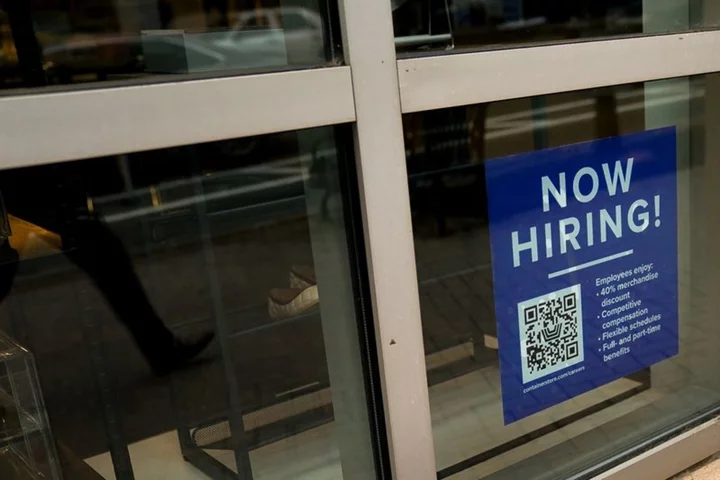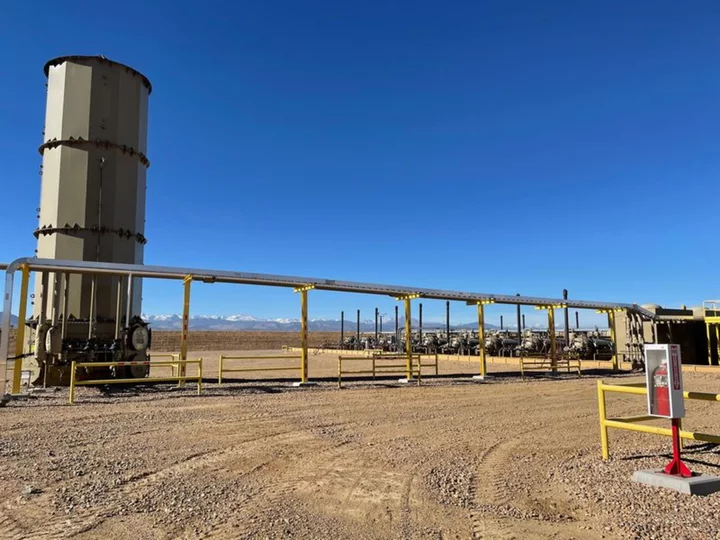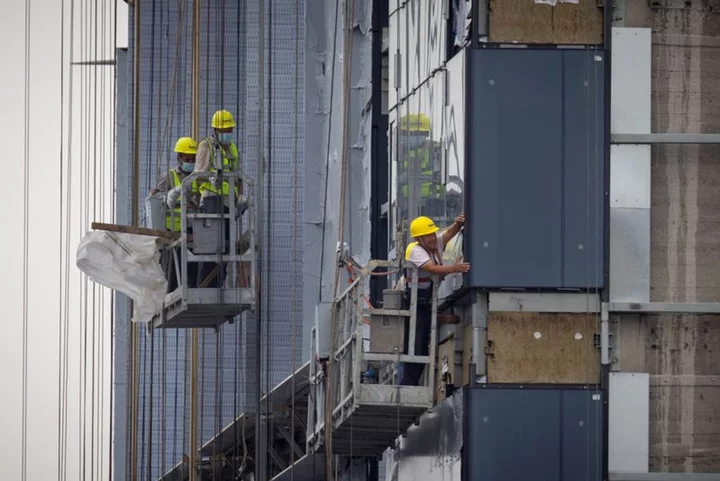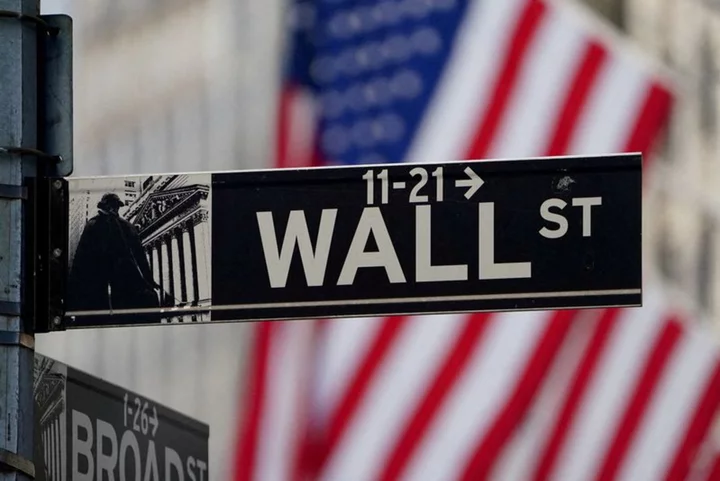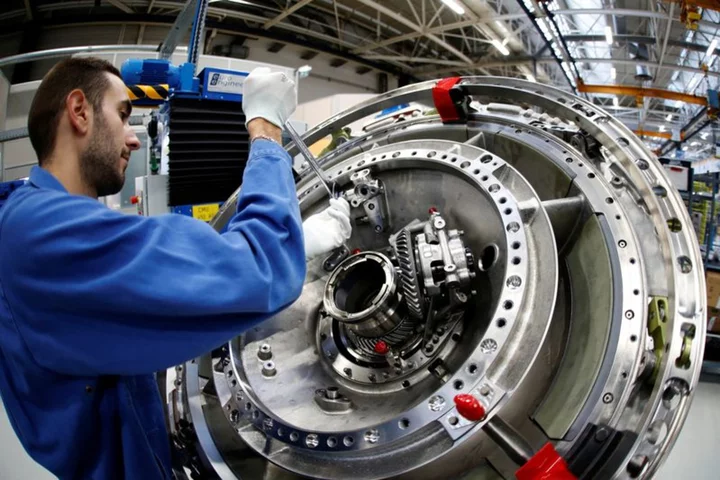By Lucia Mutikani
WASHINGTON U.S. job growth likely slowed in August, partly reflecting striking Hollywood actors and the bankruptcy of a major trucking company, but the unemployment rate probably held at more than 50-year lows as labor market conditions remain tight.
There is a tendency for the initial nonfarm payrolls count to be weaker in August. As such, economists are cautioning against reading too much into any sharp deceleration in job gains when the Labor Department's publishes its closely watched employment report on Friday.
Investors should focus on the trend, which will likely show a gradual loosening of the labor market because of the Federal Reserve's hefty interest rate increases to cool demand in the economy, economists said. The report, which is also expected to show moderate monthly wage growth, is seen reinforcing views that the U.S. central bank will not hike rates this month.
"There's going to be noise, but look at the trend, which is sort of a gentle slope downwards, it's not like anything really abrupt," said Brian Bethune, an economics professor at Boston College. "We're in a transition phase, so we have to be careful we don't throw the baby with the bath water."
Nonfarm payrolls likely increased by 170,000 jobs last month after rising 187,000 in July, according to a Reuters survey of economists. That would be the third straight month of job gains under 200,000 since December 2020. Still, employment growth would be more than the roughly 100,000 jobs per month needed to keep up with the increase in the working age population.
The Labor Department's Bureau of Labor Statistics, which compiles the employment report, reported that there were almost 18,000 workers on strike during the period it gathered data for August's report, including 16,000 Screen Actors Guild-American Federation of Television and Radio Artists members.
Striking workers are not counted as employed. Yellow Corp trucking filed for Chapter 11 bankruptcy in early August, leaving about 30,000 workers unemployed. These two factors will impose a one-time drag on employment. August payrolls also have a tendency to initially print weaker relative to the consensus estimate and recent trend before being revised higher later.
"The initial August payroll change has been under-reported and then revised higher with the September and October employment reports in 12 of the last 14 years," said Conrad DeQuadros, senior economic advisor at Brean Capital in New York. "August payrolls have also initially printed weaker than the prior three-month average change for 12 straight years, and have come in below consensus forecasts in nine of the last 12 years."
Economists had no explanation for this phenomenon. Signs are mounting that demand for labor is slowing, though some services businesses like restaurants, bars and hotels remain desperate for workers. Job openings dropped to the lowest level in nearly 2-1/2 years in July, the government reported this week.
The slowdown in demand is, however, not being accompanied by a rise in layoffs, with companies largely retaining workers after difficulties hiring during the COVID-19 pandemic.
Economists say employers will cut hours for workers before resorting to mass layoffs. The average workweek is at three-year lows, with most industries back to pre-pandemic workweeks.
The unemployment rate is forecast to have been unchanged at 3.5%, a level not seen since 1969. It is below the Fed's latest median estimate of 4.1% by the fourth quarter of this year. With inflation generally slowing, most economists believe the central bank is done hiking rates.
Since March 2022, the Fed has raised its policy rate by 525 basis points to the current 5.25%-5.50% range. Financial markets expect the central bank will leave its benchmark overnight interest rate unchanged at its Sept. 19-20 policy meeting, according to the CME Group's FedWatch Tool.
"We think the Fed is likely finished raising rates," said Dean Maki, chief economist at Point72 Asset Management in Stamford, Connecticut. "This (job growth) would be one more piece of evidence that would be consistent with that, but that also depends a lot on the upcoming inflation data."
With the labor market still tight, wage growth remains strong, though the pace of increase has slowed from early in the year. Average hourly earnings are forecast to have increased 0.3% in August after rising 0.4% in July.
In the 12 months through August, wages likely advanced 4.4%, matching July's gain.
"We suspect that July's reading was boosted by calendar effects, which reverses in August," said Ellen Zentner, chief U.S. economist at Morgan Stanley in New York. "July's payroll survey included more weekend days."
Solid wage gains are helping to underpin consumer spending and keeping a recession at bay, and creating a feedback loop that is keeping the labor market humming.
(Reporting by Lucia Mutikani, Editing by Nick Zieminski)

